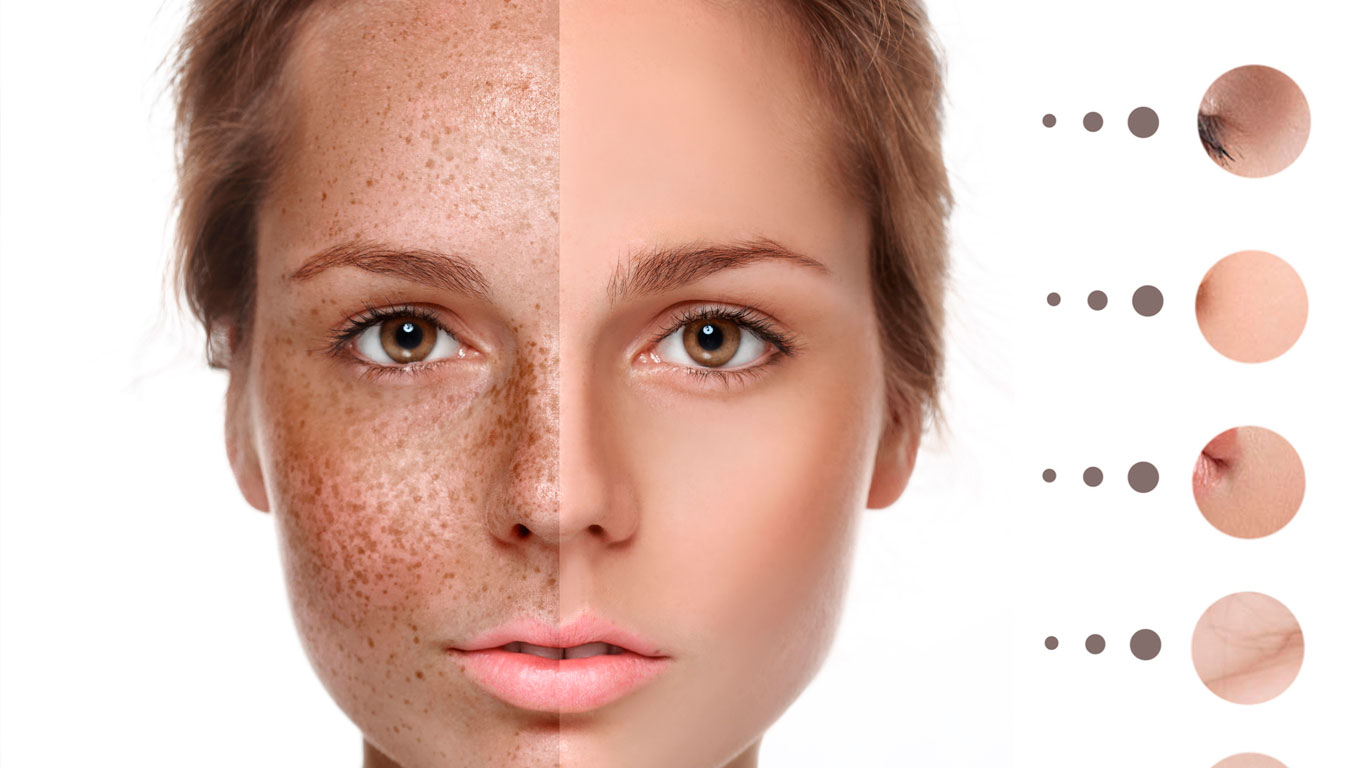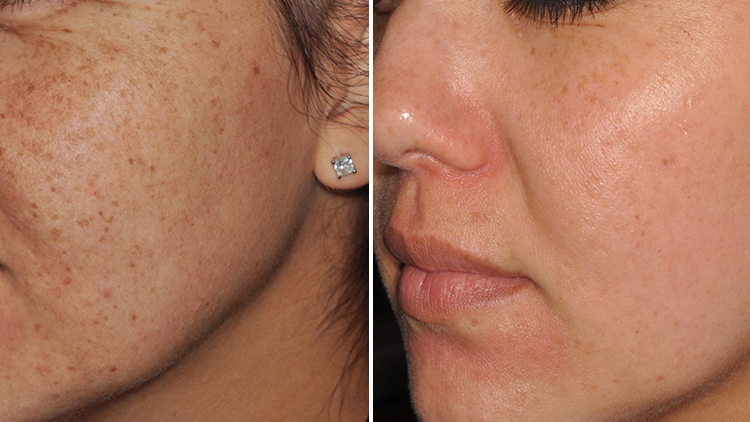Freckless & Pigmentation
Freckles and pigmentation are both related to the distribution and concentration of melanin in the skin. Melanin is a pigment produced by special cells called melanocytes, which are located in the epidermis, the outermost layer of the skin.

Freckless & Pigmentation
Freckles are small, flat, tan to light-brown spots that appear on the skin. They are usually more common in individuals with fair skin, red hair, and light-colored eyes. Freckles are caused by an increased production of melanin in response to exposure to sunlight. When the skin is exposed to the sun, melanocytes produce more melanin to protect the skin from harmful ultraviolet (UV) rays. The increased melanin production leads to the formation of freckles.
Freckles are generally harmless and do not pose any health risks. However, they can become more prominent with sun exposure and may darken during the summer months. Freckles are often genetic, meaning they can be inherited from parents or other family members. Some people may have a genetic predisposition to freckles, while others may not develop them at all.
Types Of Freckles & Pigmentation
Hyperpigmentation:
This occurs when certain areas of the skin become darker than the surrounding skin. Common causes of hyperpigmentation include excessive sun exposure, hormonal changes (such as during pregnancy or with the use of birth control pills), and certain skin conditions or injuries.
Hypopigmentation:
Hypopigmentation refers to areas of the skin that are lighter or have less color than the surrounding skin. It can be caused by conditions such as vitiligo, which is characterized by the loss of melanocytes in certain areas of the skin, or by certain infections, injuries, or autoimmune disorders.
Melasma:
Melasma is a common form of hyperpigmentation that causes brown or grayish-brown patches on the face, particularly on the cheeks, forehead, nose, and upper lip. It is often associated with hormonal changes, such as during pregnancy or with the use of hormonal medications.
Post-inflammatory hyperpigmentation (PIH):
PIH occurs as a result of skin inflammation or injury, such as acne, eczema, or a wound. After the inflammation subsides, the affected area may develop increased pigmentation, appearing darker than the surrounding skin.
What to Expect During Treatment
At GentleMax Clinics, we prioritize your comfort and satisfaction throughout your Plexr Treatment experience. Here’s what you can expect:
Consultation and Customized Treatment Plan: Our skilled practitioners will begin with a comprehensive consultation, where they will evaluate your skin concerns, medical history, and aesthetic goals. Based on this assessment, they will create a personalized treatment plan tailored to your specific needs.
Treatment Session: During the treatment, the Plexr device will be used to deliver controlled plasma energy to the targeted areas of your skin. The procedure is typically well-tolerated, and any discomfort is minimized with the use of topical numbing creams or local anesthesia, ensuring your comfort throughout the session.
Post-Treatment Care: After your Plexr Treatment session, our experts will provide you with detailed post-treatment care instructions. These may include gentle skincare practices, avoiding direct sun exposure, and using appropriate skincare products to promote healing and optimize your results.
Follow-Up Sessions: Depending on your individual needs and treatment goals, multiple Plexr Treatment sessions may be recommended. Our team will guide you through the recommended treatment plan to achieve the best possible outcomes.

Freckles & Pigmentation Treatment Results


At GentleMax Clinics, we are committed to providing exceptional aesthetic treatments with a focus on safety, expertise, and delivering outstanding results. With our skilled team of professionals and state-of-the-art technology, you can trust us to guide you through your Plexr Treatment journey with the utmost care and precision.
Enhance your natural beauty with Freckles & Pigmentation Treatment
TREATMENT TIME
60 minutes
DURATION
Up to 18 months
RETURN TO WORK IN
Same day
ANAESTHETIC
Topical anaesthetic
Frequently Asked Questions
Freckles and pigmentation are often caused by sun exposure, hormonal changes, genetics, or inflammation. Common types include sun spots, melasma, post-inflammatory hyperpigmentation (PIH), and age spots.
Not exactly.
Freckles are small, flat, brown spots usually triggered by sun exposure and more common in lighter skin.
Pigmentation is a broader term that refers to any skin discoloration, including melasma, sun spots, or acne scars.
Popular and effective treatments include:
Laser therapy (Q-switched, Pico, IPL)
Chemical peels
Microneedling with brightening serums
Topical creams (hydroquinone, retinol, Vitamin C)
Skin boosters and PRP for overall tone improvement
Some lasers, like PicoSure or Q-switched Nd:YAG, are safer for darker skin tones. It’s important to choose the right laser type and settings for your skin type to avoid hyperpigmentation or burns.
They can return, especially if you don’t use sun protection. Regular use of broad-spectrum SPF and maintenance treatments can help prevent recurrence.
Results vary, but typically:
Laser treatments: 2–4 sessions
Chemical peels: 3–6 sessions
Topical creams: gradual improvement over 6–12 weeks
Laser: Mild redness or flaking for 2–5 days
Peels: Peeling and dryness for 3–7 days
Topicals: Usually no downtime, but may cause temporary irritation
Freckles are not dangerous or cancerous, but any sudden changes in size, color, or shape should be checked by a dermatologist to rule out skin cancer or other concerns.
While complete removal isn’t guaranteed, most pigmentation can be significantly reduced. Long-term maintenance and proper skincare are key to keeping skin clear and even-toned.
Daily SPF 30+ or higher
Limit direct sun exposure, especially midday
Use antioxidant-rich skincare (Vitamin C, niacinamide)
Avoid picking at acne or inflamed skin
Stick to a consistent skincare routine

